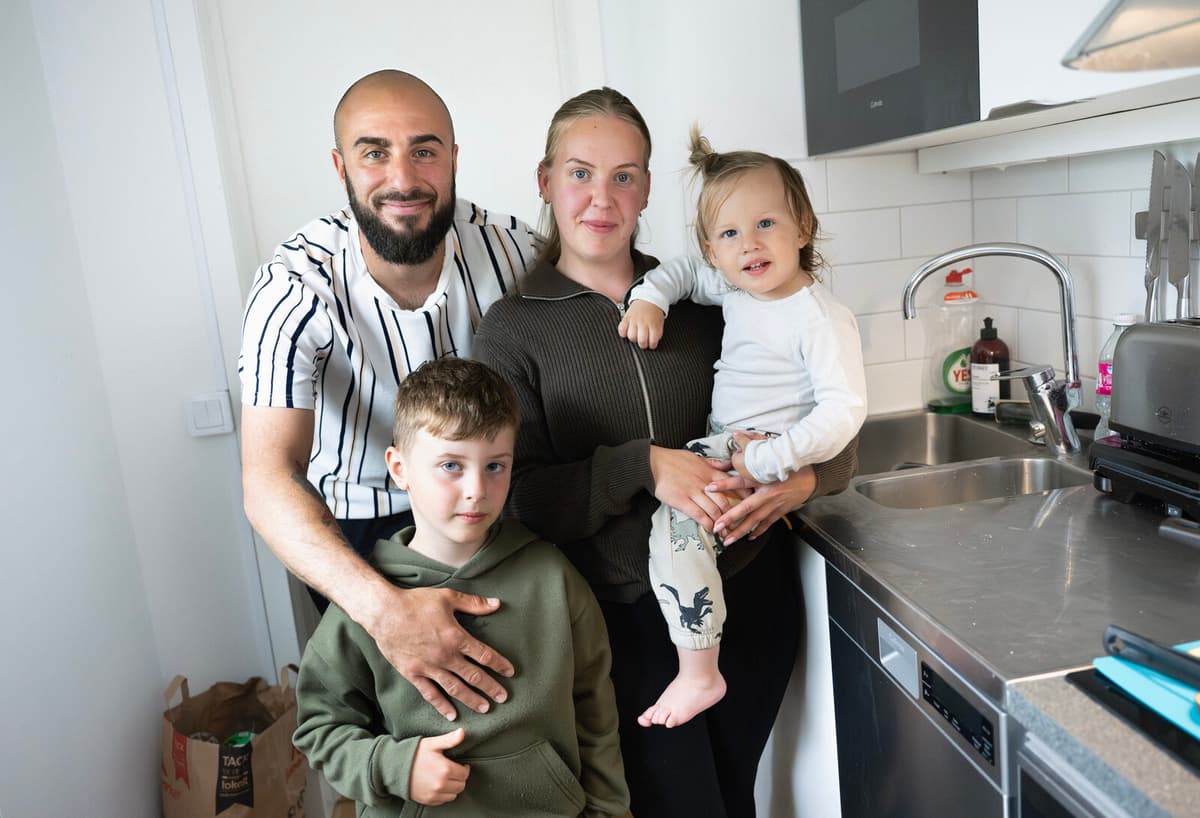Wet, soap, rinse and dry. All within five minutes. That's how a shower works these days in Tom Karlsson's rental apartment in Brandbergen south of Stockholm. Since six months ago, he and his neighbors are charged for water if their consumption per month exceeds a certain quota. If you use less water than the quota, you get money back. Reasonable, thinks Tom Karlsson.
Previously, single households had to help finance others' water consumption. This is more fair and better for the environment, he says.
With the argument that it is good for the environment, private landlord Victoriahem has introduced individual water metering in several of its properties. However, saving water daily is a challenge for a family with children, according to Anna Hedlund, who lives in the same neighborhood and cooks dinner with her husband while their sons Adrian, 5 years old, and Hamilton, 1.5 years old, stir around them in the kitchen. The four of them live on 46 square meters and get a water bill of at least 400 kronor per month, in addition to the monthly rent of around 7,000 kronor.
Every new expense is felt. I usually tell the kids not to shower and bathe for a long time. But they are at an age when they love to bathe, says Anna Hedlund.
According to an EU decision, water meters should now be installed in each apartment when new multi-dwelling buildings are built. Although such requirements do not apply to older properties, more and more tenants in the country's existing stock now have to pay for their own water consumption, says Carl-Johan Bergström, chief negotiator, Hyresgästföreningen.
Creates disputes
In addition to Victoriahem, property companies such as Stena, Sveafastigheter and Balder are in the process of introducing the system.
Usually, it is the landlord and Hyresgästföreningen that negotiate how much water should be included in the rent. At Stena Fastigheter in Gothenburg, these negotiations have broken down and Stena has turned to the rent tribunal to have the matter tried and make the water billing mandatory. Similar disputes are ongoing in several parts of the country.
We are not always in agreement on how to calculate the cost and how large a normal water consumption should be, says Carl-Johan Bergström.
Price based on apartment, not number of residents
A dilemma is that the water price hits so differently because it is based on the size of the apartment, not how many people live there, he says.
If several people live in a small apartment, they easily exceed the limit for the water that is included in the rent, says Carl-Johan Bergström, who believes that the system must be adjusted.
The normal consumption for the water that can be used before you start being charged is calculated to be 66,000 liters of cold water and 35,000 liters of hot water per year for an average apartment of three rooms and a kitchen.
TT: Is there a risk that environmental responsibility and costs are placed too much on individuals in this way?
There is definitely. But property owners should not be able to demand higher rent with reference to their increased water costs, says Carl-Johan Bergström.
Opportunity to influence costs
Many private and municipally owned property owners, as well as housing associations, have introduced, or are working to introduce, individual water metering and billing in different parts of the country, confirms Johan Kleveland, association lawyer at the industry organization Fastighetsägarna. The idea with the billing is that water consumption should decrease as residents adapt their water usage for cost reasons, he says.
The aspect of fairness exists, thinks Johan Kleveland, even if the bill can hit densely populated areas hard.
Instead of the costs being distributed among all residents, you only pay for your own usage. The tenant or condominium owner can then adapt their consumption and reduce their costs, he says.
Ebba Blume/TT
Facts: What is required before individual water metering is introduced
TT
Newly built condominiums and rental apartments must have individual water metering and billing for hot water. The requirement also applies to major renovations of existing buildings.
Before individual water metering can be used, there are requirements that must be met:
1. The water must reach the tap within 30 seconds and if it is hot water, it must be at least 50 degrees.
2. Each apartment must have access to a meter.
3. The residents must have a test period of at least two months to try out how much water they consume without the cost being affected.
Installation of individual water metering is ongoing/planned, for example, in Victoriahem's properties in Södertälje, in Brandbergen, Jordbro, Alby in Vårby/Visättra and in Vårberg.
In total, approximately 100,000 tenants in the country are charged for their water consumption, in both older and new buildings. This does not include condominium owners.
Sources: Fastighetsägarna, Hyresgästföreningen and Jonathan Öhman, communications manager, Victoriahem.





